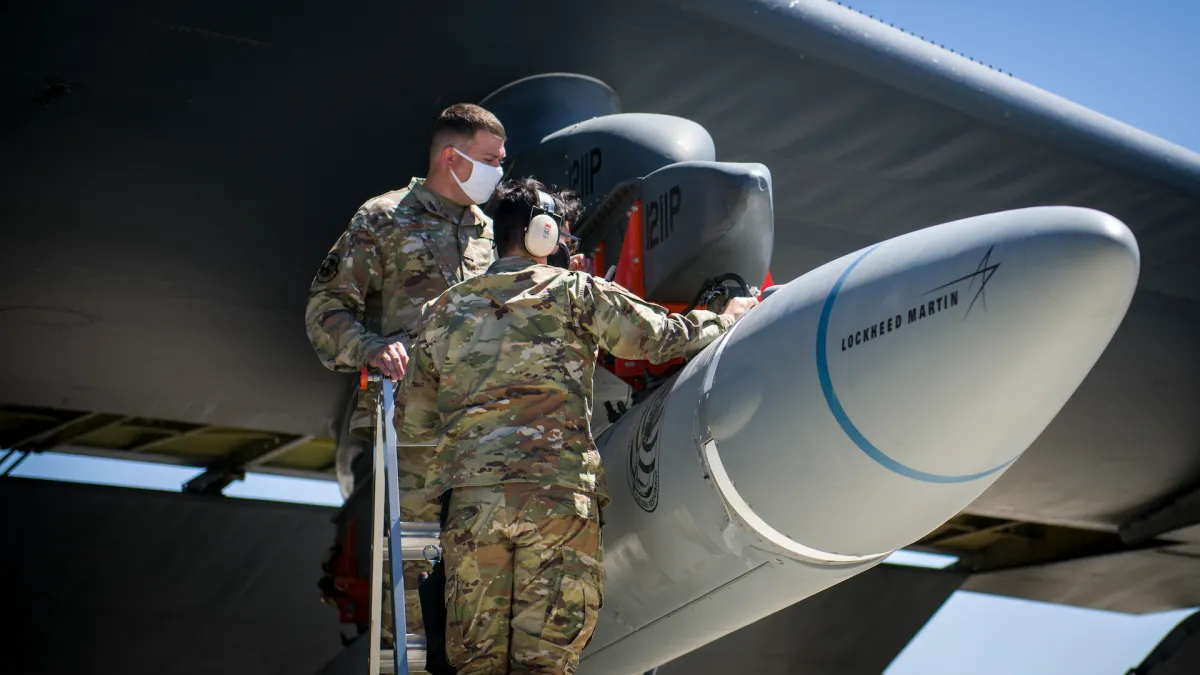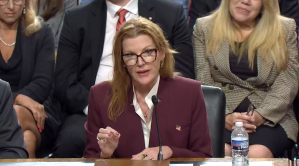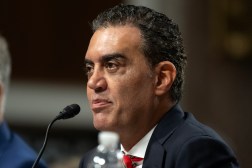Nominee for Pentagon’s new S&T post commits to prioritizing hypersonics, quantum tech

President Joe Biden’s nominee to be the first-ever assistant secretary of defense for science and technology told lawmakers that development of hypersonic weapons and quantum computing will be top priorities if she’s confirmed.
She also pledged to improve the department’s partnerships with small businesses in order to better integrate new capabilities into the services.
“In this complex and rapidly evolving security environment, my vision aims to boost our technical advantages by shepherding our critical and emerging technologies, strengthening our industrial manufacturing base and protecting our intellectual property,” Aprille Ericsson said Tuesday during her confirmation hearing in front of the Senate Armed Services Committee. “If confirmed, I will ensure the work of my portfolio is always aligned with the National Defense Strategy, and I will prioritize vital disruptive technologies like hypersonic weapons, artificial intelligence and quantum computing.”
The S&T job that Ericsson has been tapped for is one of three new leadership positions established under the fiscal 2023 National Defense Authorization Act that will foster technology research and development. The new posts will be overseen by Undersecretary of Defense for Research and Engineering Heidi Shyu.
“The establishment of these roles within Research & Engineering better positions our team to execute upon our mission of preserving our nation’s technological edge, now and into the future,” Shyu said in a July statement announcing the reorganization.
An aerospace engineer, Ericsson worked at NASA for over three decades where she held numerous leadership positions. Most recently, she served as the new business lead for the NASA Goddard Space Flight Center’s instrument systems and technology division.
If confirmed as assistant secretary of defense, she would be responsible for the oversight of the Pentagon’s extensive science-and-technology enterprise, including its workforce, infrastructure and partnerships with industry. She would also be responsible for four of the 14 critical technology areas designated by Shyu: advanced materials, quantum, biotechnology and 5G/FutureG.
In terms of emerging tech, Ericsson noted that one of her top focus areas would be the development of hypersonic weapons and quantum technologies. In written responses to senators’ advance policy questions ahead of Tuesday’s confirmation, she said that she sees significant benefits if the two technologies are able to be integrated into future warfighter capabilities.
“The United States is in a defining decade for technologies such as quantum and hypersonic/anti-hypersonic capabilities. These two technologies do not have many apparent commercial applications, and, therefore, the Department must oversee their rapid development and defense applicability,” Ericsson wrote. “We envision winning the race to beat our peer competitors and delivering on our quantum technology investments with realized applications in computing and sensors.”
Pentagon officials and lawmakers have publicly stated their concerns that the United States is much further behind in hypersonic weapon development and anti-hypersonic capabilities than adversaries, particularly China.
Ericsson told lawmakers Tuesday she is interested in leveraging some of the work done in hypersonics at NASA — such as the X-59 Quesst aircraft for the agency’s Low-Boom Flight Demonstrator project — to aid the U.S. military if she’s confirmed.
“I’m hoping that maybe some of the technology we’re developing at NASA, particularly with the X-59 [plane], if there’s ways that we can infuse that and bring together the two different agencies — the Department of Defense and our agency — to maybe further that technology,” she said.
As for quantum technology, Ericsson highlighted work done to accelerate and demonstrate quantum sensors for military applications. However, the DOD still faces challenges in standing up a domestic supply chain of the critical components needed to make quantum tech affordable and easy to scale, she wrote in her responses to lawmakers’ policy questions.
Beyond emerging technologies, Ericsson stressed that she would strive to bring in more small businesses to do work with the Defense Department’s S&T enterprise and close the so-called “valley of death.” The phenomenon occurs when a promising technology or capability fails to transition from research and development into production and fielding.
“The development of critical and emerging technologies by small businesses is another vital contribution to the technological capabilities of the Department,” she wrote. “If nominated for the ASD(S&T) position, I would prioritize providing support and streamlining [Small Business Innovation Research or Small Business Technology Transfer] processes to ensure we create a transparent and efficient process for small businesses.”
Similar to her vision for hypersonics development, Ericsson told lawmakers she hopes to bring her experience working with small businesses at NASA with her to the Pentagon — especially in regard to SBIR/STTR programs.
“I’m looking forward to having roadshows and opportunities to have workshops and to listen and learn,” she said.






